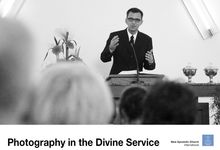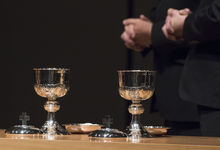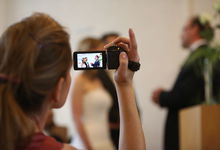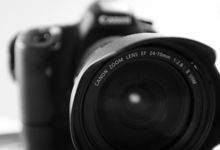Getting the picture (5) – Preparation is the magic word
A change in perspective is important for good pictures. But how if a photographer is not supposed to walk around constantly. The solution: short distances. That requires knowledge of the premises and a plan.
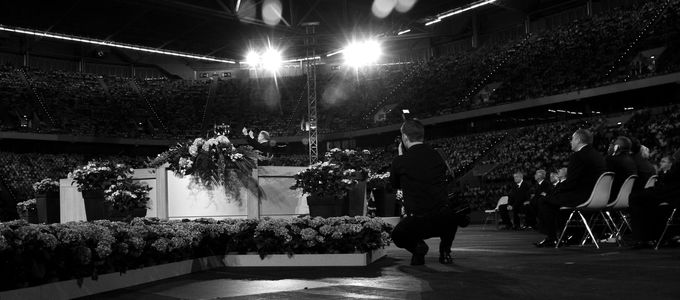
Crucial for a photographer in a divine service is a good seat: it should be so central that the important subjects—altar, musical performers, as well as the exit—are as close as possible. The seat must be easily accessible, but not within the field of vision of a video camera. In most cases, a corner seat is good; in a large hall, a seat near the central aisle will work.
Knowing what will happen where
Securing a good seat is not the only reason for the photographer to be at the church or hall early. Because if you have never been in the building before, you now have the opportunity to familiarise yourself with the premises.
- Are there walls or ceilings that could pose a problem? Do I have to worry about reflective surfaces, different types of light, and colour casts in my shots?
- Where will the officiant enter the room? Which route will he take to the altar?
- Where will the choir be singing, the orchestra be playing? Where will the conductor be standing?
- Where are the hardwired video cameras installed and might get in my way?
- Which are the best positions from which one can take pictures undisturbed and without causing a disturbance to others?
Knowing when to do what
The answers to the above questions can best be combined with a timetable, which the photographer should ideally draft at home. Its central most important piece of information: when is the best time to photograph which subjects?
Not every photograph has to be taken during the divine service. The choir and instrumentalists are active already long before the opening prayer. And the floral decorations and the altar cross are still there after the divine service—just to name a few examples.
Knowing when things are happening
In order to be able to plan which subjects are to be photographed before or after the divine service, it is of course important to know the sequence of events. The liturgical framework does not hold too much potential for surprises, but possible acts or blessings certainly do.
Whatever the case may be, it is definitely helpful to organise a programme and contact the organisers ahead of time. No less important are consultations with a second photographer, should there be one. The work can be divided up according to subjects, location, or time. That will even make for shorter ways.
Photo: Jessica Krämer
Article info
Author:
Date:
Keywords:
Andreas Rother
02.05.2019
Media,
Divine service,
Congregational life


